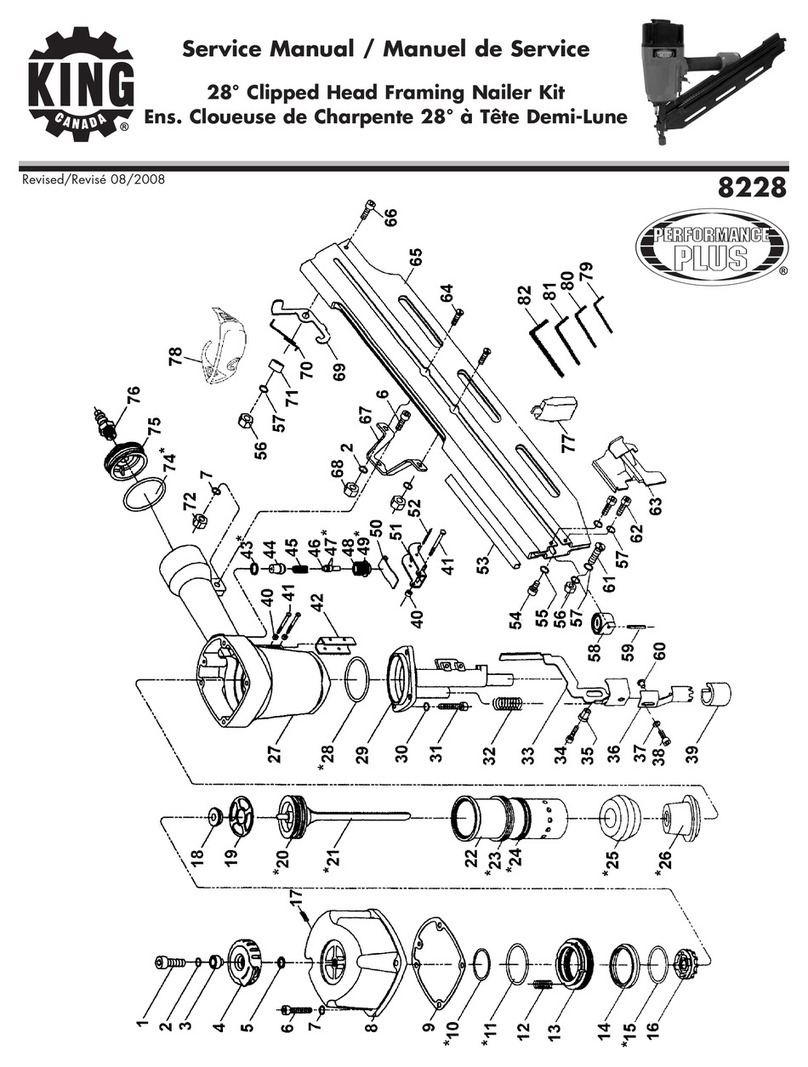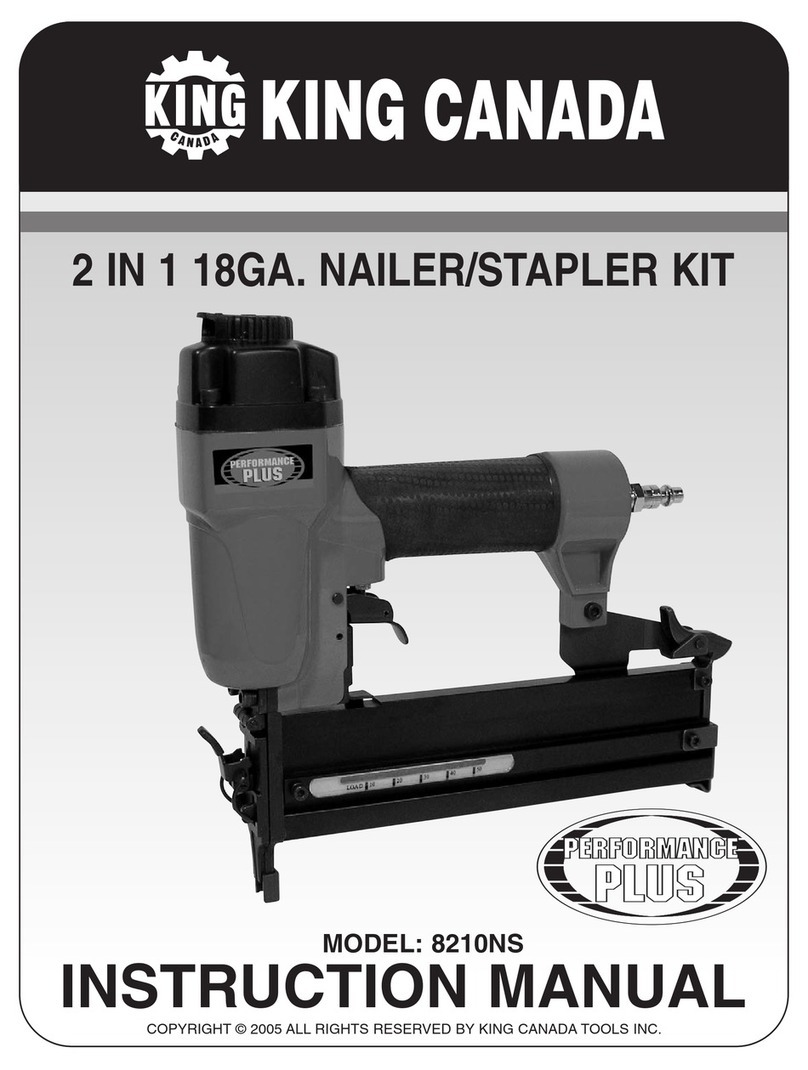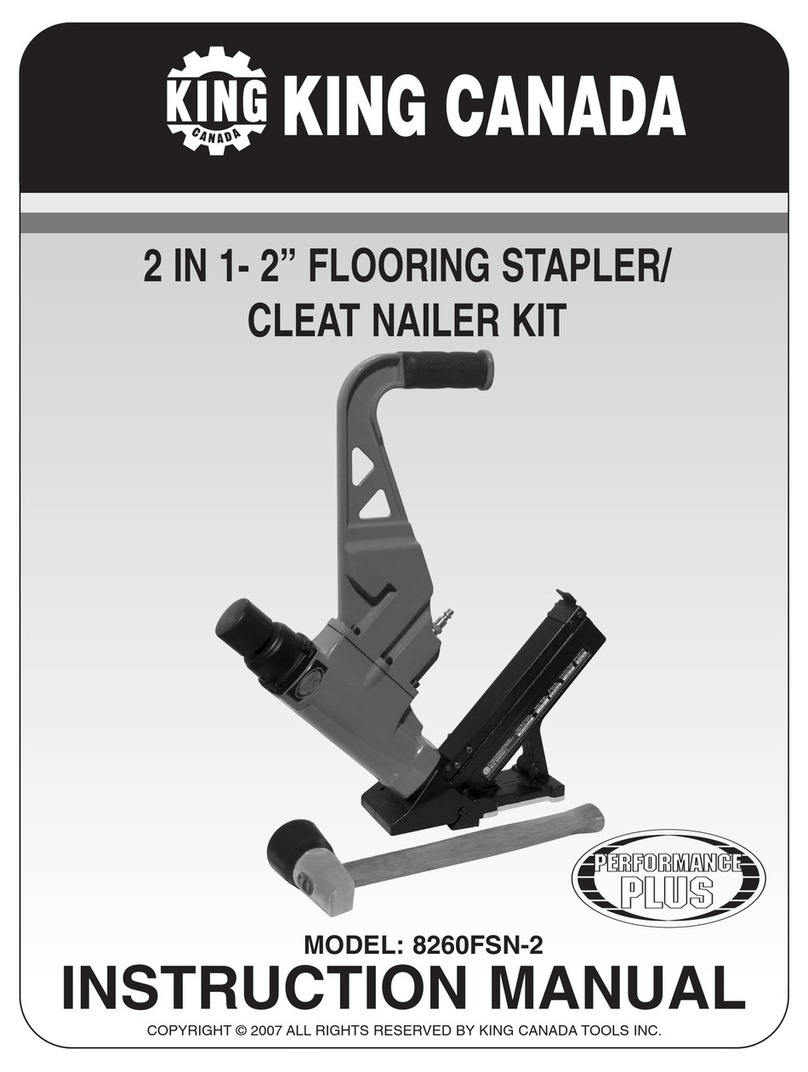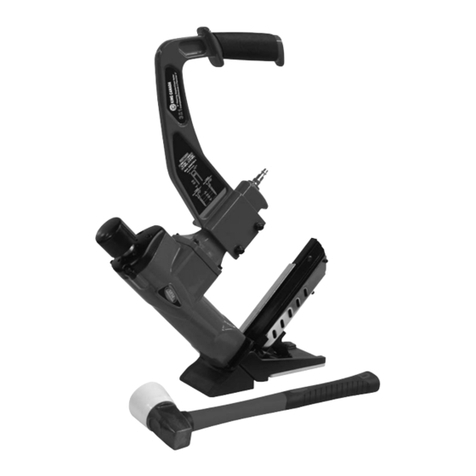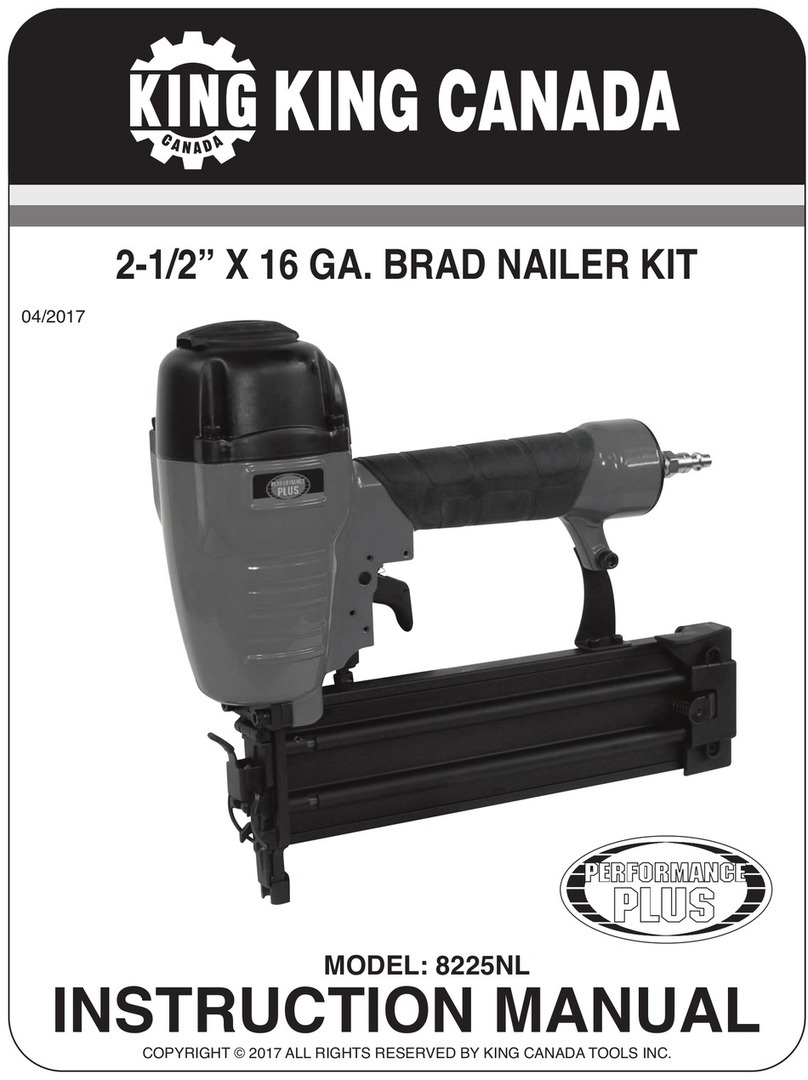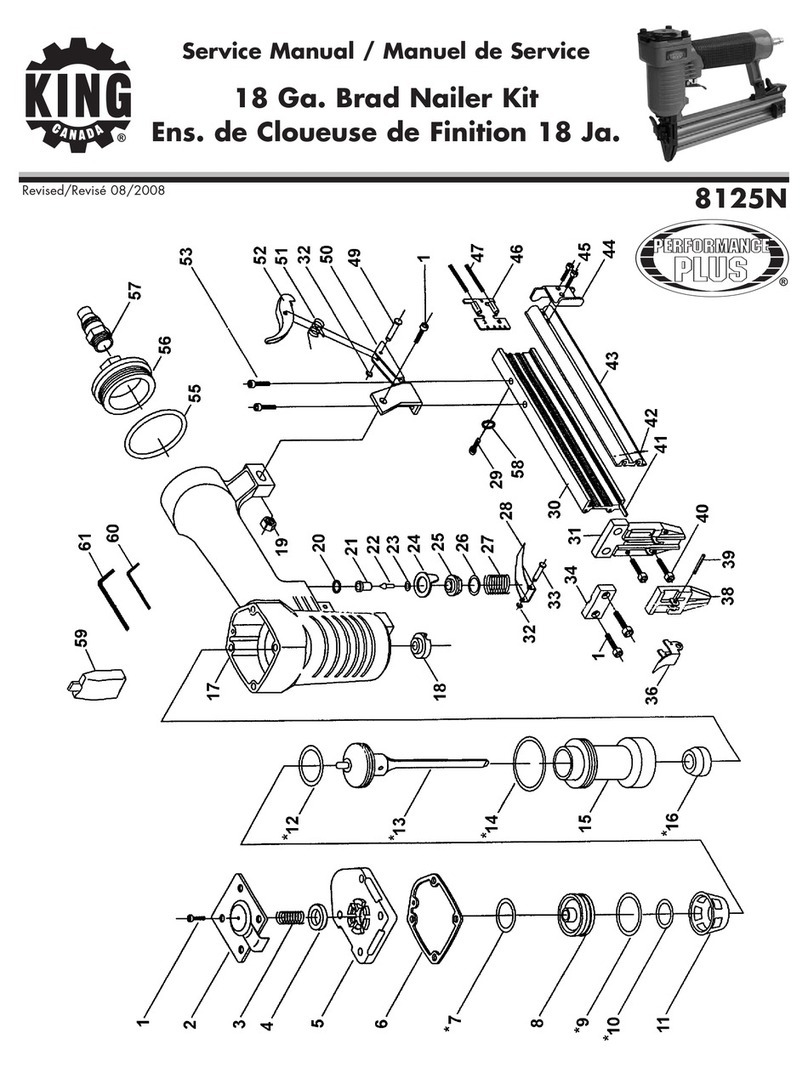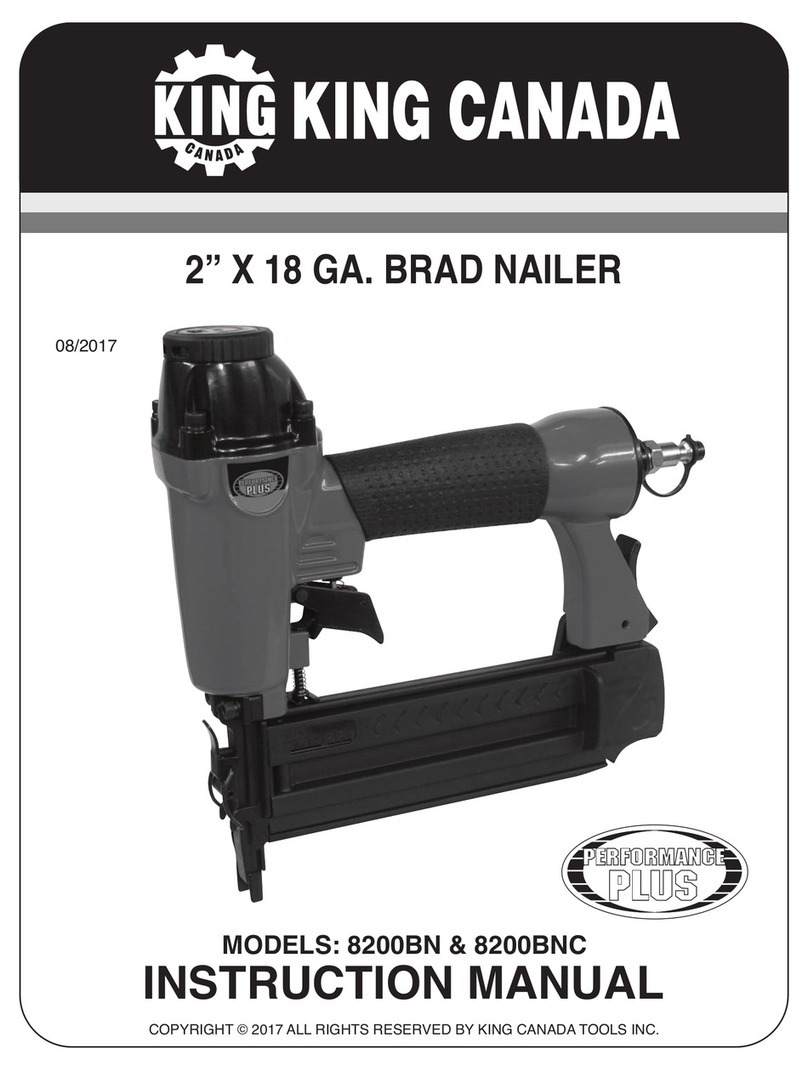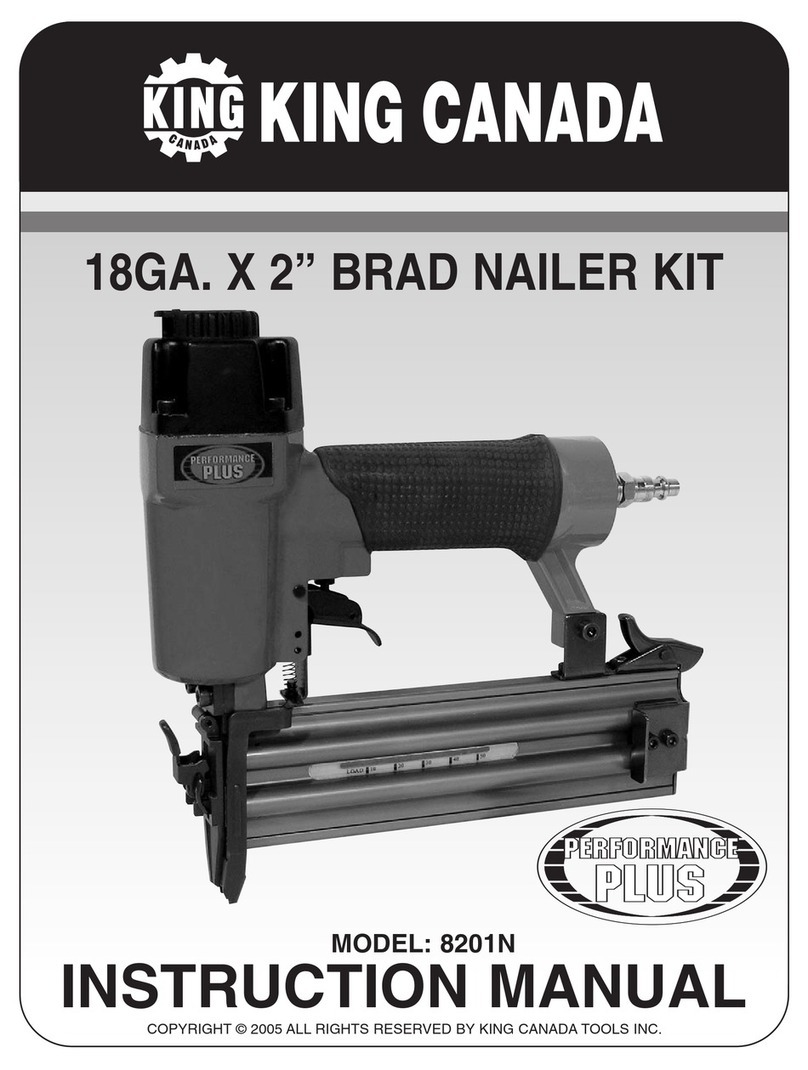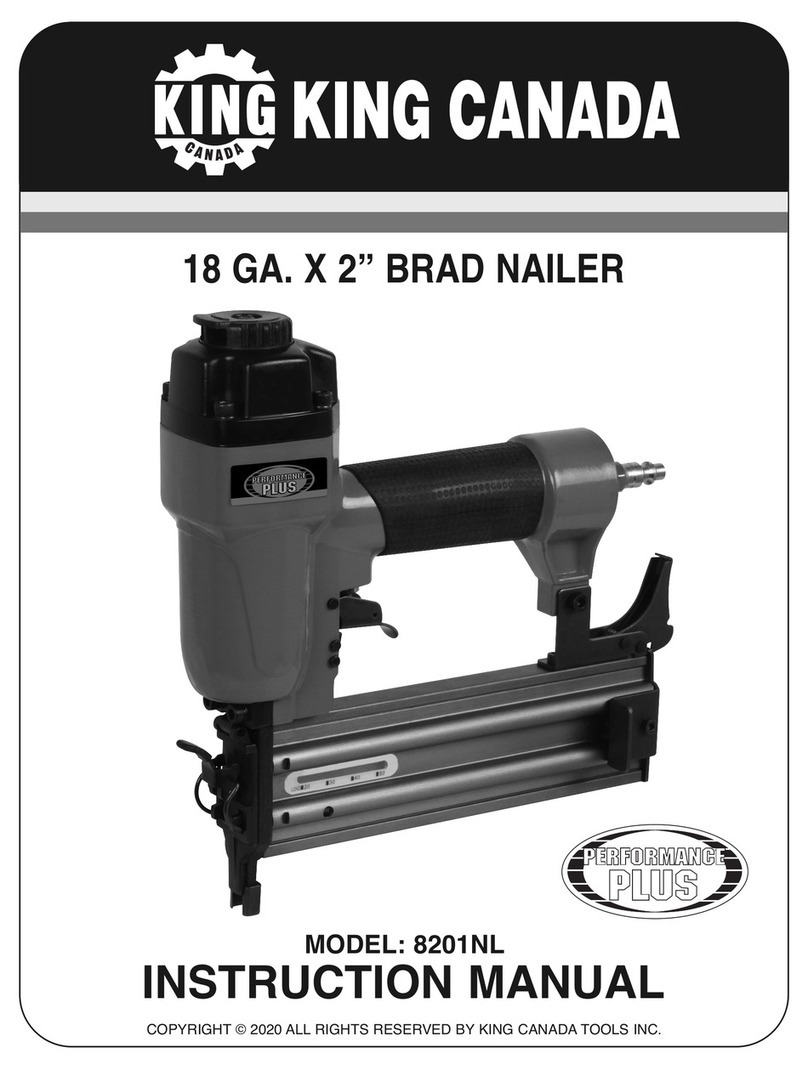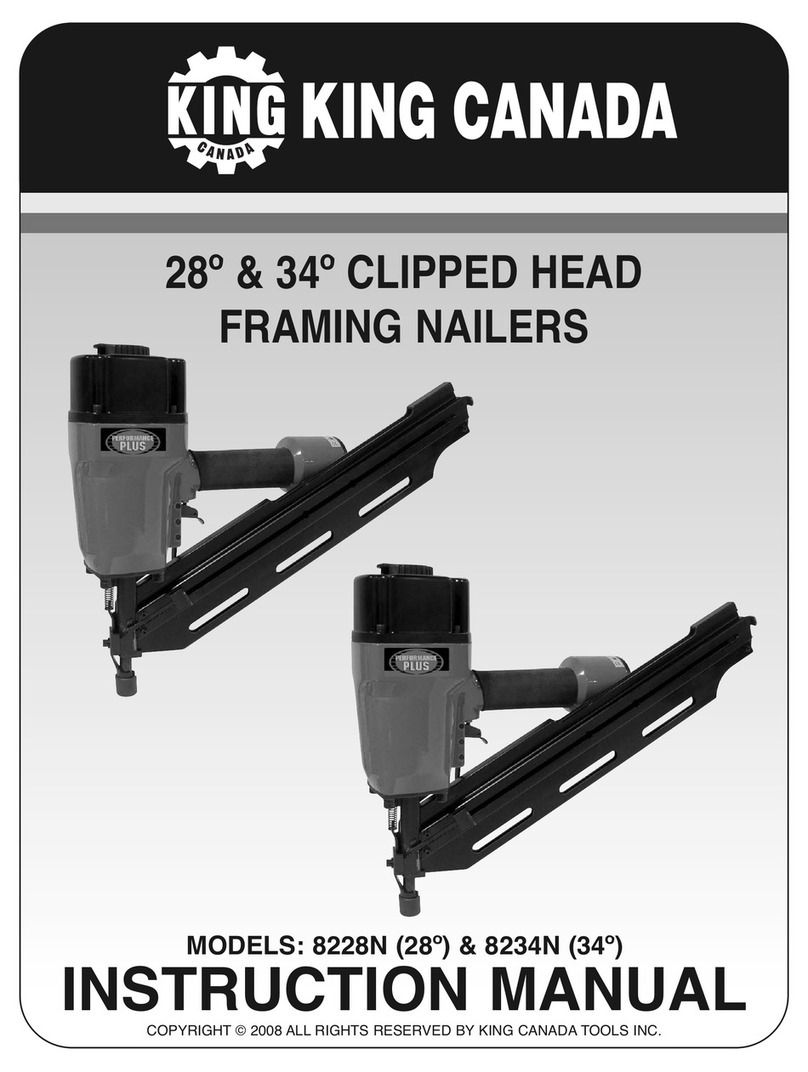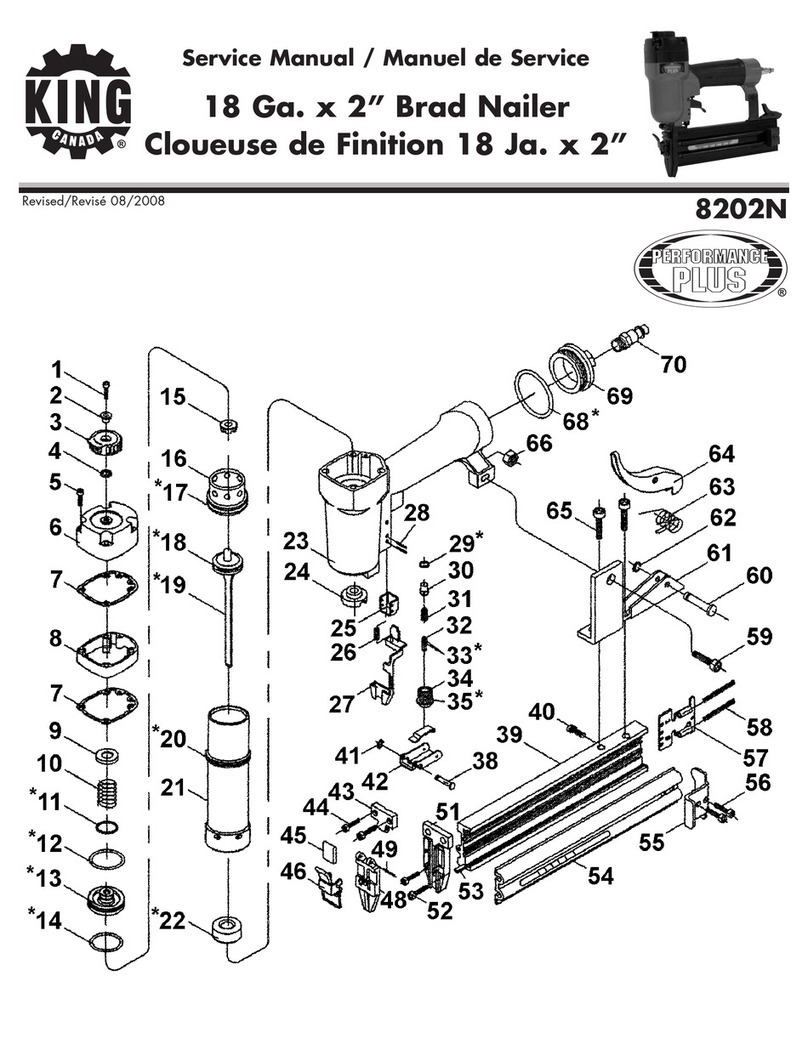
SPECIFIC SAFETY INSTRUCTIONS
FOR CORDLESS GAS FRAMING NAILER
6.USE OUTSIDE OR IN WELL-VENTILATED AREAS.
This nailer exhausts carbon monoxide which is a danger to health
when inhaled. This nailer must not be used in enclosed or poorly
ventilated areas. Do not inhale.
7. OPERATE WITHIN PROPER TEMPERATURE RANGE.
The operating environment for this nailer is between 0°C (32°F)
and 40°C (104°F) so ensure use within this temperature range.
This nailer may fail to operate below 0°C (32°F) or above 40°C
(104°F).
8. STORE NAILER WITH FUEL CELL AND BATTERY REMOVED.
When not in use, the nailer, fuel cell and battery should be stored
in tool case and in a dry place. Store indoors at temperature below
50°C (120°F). Keep the nailer, fuel cell and battery out of direct
sunlight and outside a vehicle. Keep out of reach of children. Lock
in a storage area.
9. CHECK PUSH LEVER BEFORE USE.
Remove fuel cell and battery,and then make sure the push lever
operates properly. (The push lever may be refered as a “safety”).
Never use the nailer unless the push lever is operating properly,
otherwise the nailer could drive a fastener unexpectedly. Do not
tamper with or remove the push lever,otherwise the push lever
becomes inoperable.
10. DO NOT LOAD FASTENERS WITH TRIGGER OR PUSH LEVER
DEPRESSED.
When loading fasteners into the nailer, do not depress the trigger,
do not depress the push lever and keep the nailer pointed
downward.
11. PLACE NAILER PROPERLY ON WORKPIECE.
Do not drive fasteners on top of other fasteners or with the nailer at
too steep of an angle; the fasteners can ricochet and hurt
someone.
12. DO NOT DRIVE FASTENERS INTO THIN BOARDS OR NEAR
CORNERS AND EDGES OF WORKPIECE.
The fasteners can be driven through or away from the workpiece
and hit someone.
13. NEVER USE ANAILER WHICH IS DEFECTIVE OR OPERATING
ABNORMALLY.
If the nailer appears to be operating unusually,making strange
noises or otherwise appears defective, stop using it immediately
and arrange for repairs by an authorized service centre.
14. TAKE FUEL CELL AND BATTERY OUT OF NAILER.
Take fuel cell and battery out of nailer when doing maintenance and
inspection, clearing a jam, when it is not in use, when you are
leaving work area, moving it to another location or handing it to
another person. Never attempt to clear a jam or repair the
nailer unless you have taken fuel cell and battery out of the
nailer and removed all remaining fasteners from the nailer. The
nailer should never be left unattended since people who are not
familiar with the nailer might handle it and injure themselves.
15. HANDLE NAILER CAREFULLY.
Do not drop the nailer or strike the nailer against hard surfaces and
do not scratch or engrave signs on the nailer.
16. NEVER MODIFY OR ALTER THIS NAILER.
Doing so may cause it to malfuction and personal injuries may
result.
17. DISPOSAL OF THE EXHAUSTED BATTERY.
Do not dispose of the exhausted battery. The battery will explode if
it is incinerated. The product that you have purchased contains two
rechargeable batteries. These batteries are recyclable. At the end
of their useful life, under various state and local laws, it may be
illegal to dispose of these batteries into the municipal waste
stream. Check with your local solid waste officials for details in your
area for recycling options or proper disposal.
FUEL CELLS
WARNING! Fuel cell, fuel and propellant are flammable under
pressure.
1. Explosion / Fire Hazard
Failure to follow all instructions may result in fire and explosion
when handling dispensers of combustible gas for the purpose of
storage, transportation, inserting into and taking out of the tool and
disposal.
Do not smoke when handling the fuel cell.
2. Do not inhale its contents.
In the case of being inhaled, the person affected should be taken
into open air and brought into a comfortable position.
3. Expanding gases cause low temperatures.
Fluid gases might cause injuries when getting in touch with skin or
eyes. In case of contact with skin, wash the contact surface
carefully with warm water and soap and apply a skin cream when
dry. In case of contact with eyes, rinse the open eyes under running
water. Contact a doctor if necessary.
4. Store in well-ventilated area.
Do not store above 50°C (120°F) (e.g. direct sunlight or in a vehicle.)
Do not expose to an open flame and sparks.
Do not puncture or open the fuel cell.
Do not refill, reclaim or recycle the fuel cell.
5. Dispose of according to local regulations for aerosol products.
Do not dispose of fuel cell with other scrap for recycling. Keep out
of reach of children.
BATTERIES
Improper use or the battery or battery charger can lead to serious
injury. To avoid these injuries.
1. Never disassemble the battery.
2. Never incinerate the battery,even if it is damaged or is completely
worn out. The battery can explode in a fire.
3. Never insert any objects into the battery charger’s air vents. Electric
shock or damage to the battery charger may result.
4. Never charge outdoors. Keep the battery away from direct sunlight
and use only where there is low humidity and good ventilation.
5. Never charge when the temperature is below 10°C (50°F) or above
40°C (104°F).

